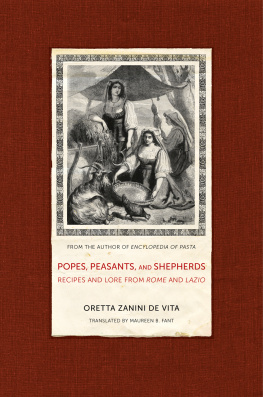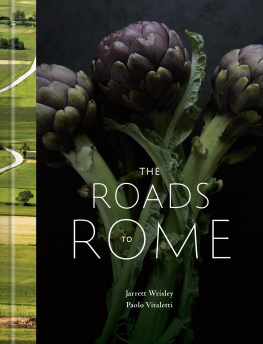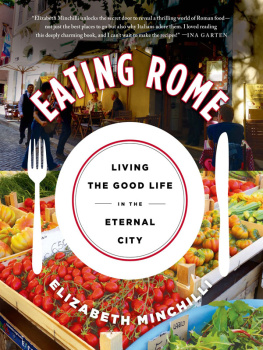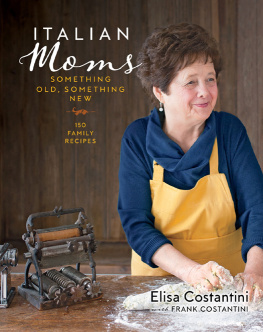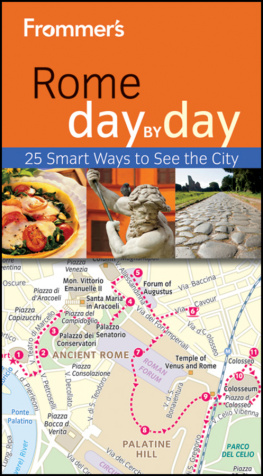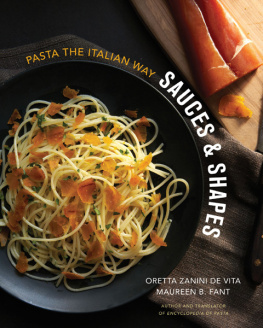

CALIFORNIA STUDIES IN FOOD AND CULTURE
Darra Goldstein, Editor
The publisher gratefully acknowledges the generous support of the Ahmanson Foundation Humanities Endowment Fund of the University of California Press Foundation.
The publisher also gratefully acknowledges the generous support of the Humanities Endowment Fund of the University of California Press Foundation.
Popes, Peasants,
and Shepherds

Popes, Peasants,
and Shepherds
RECIPES AND LORE
FROM ROME AND LAZIO
Oretta Zanini De Vita
Translated by Maureen B. Fant
With a foreword by Ernesto Di Renzo

UNIVERSITY OF CALIFORNIA PRESS
BERKELEY LOS ANGELES LONDON
Series page: Cauliflower grower selling his harvest in the streets of Rome (Biblioteca Clementina, Anzio)
Frontispiece: Bartolomeo Pinelli, Temple of the Sibyl at Tivoli (Biblioteca Clementina, Anzio)
University of California Press, one of the most distinguished university presses in the United States, enriches lives around the world by advancing scholarship in the humanities, social sciences, and natural sciences. Its activities are supported by the UC Press Foundation and by philanthropic contributions from individuals and institutions. For more information, visit www.ucpress.edu.
University of California Press
Berkeley and Los Angeles, California
University of California Press, Ltd.
London, England
2013 by Oretta Zanini De Vita
A revised and expanded edition of Il Lazio a tavola : Guida gastronomica tra storia e tradizioni, originally published in Italian and simultaneously in English as The Food of Rome and Lazio: History, Folklore, and Recipes.
Library of Congress Cataloging-in-Publication Data
Zanini De Vita, Oretta, 1936
[Lazio a tavola. English]
Popes, peasants, and shepherds : recipes and lore from Rome and Lazio / Oretta Zanini De Vita ; Translated by Maureen B. Fant.
pages cm.(California studies in food and culture ; 42)
A revised and expanded edition of Il Lazio a tavola : Guida gastronomica tra storia e tradizioni, originally published in Italian.
Includes bibliographical references and index.
ISBN 978-0-520-27154-8 (cloth : alk. paper)
eISBN 9780520955394
1. Food habitsItalyRome. 2. Food habitsItalyLazio. 3. CookingItalyRome. 4. CookingItalyLazio. 5. ItaliansFood. I. Title.
TX 723.2. R 65 Z 36132013
394.120945632dc23
2012038610
Manufactured in the United States of America
22 21 20 19 18 17 16 15 14 13
10 9 8 7 6 5 4 3 2 1
The paper used in this publication meets the minimum requirements of ANSI/NISO Z 39.48-1992 ( R 2002) ( Permanence of Paper ).
For my daughter, Chiara De Vita

The Lazio region of Italy
CONTENTS
FOREWORD: LAZIOS GASTRONOMIC ROOTS
ERNESTO DI RENZO
The region of Lazio is a mosaic invented on paper between 1860 and the 1930s. The morphology, climate, and landscape of its territory are heterogeneous. Mountains alternate with plains, hills with coastal areas, valleys with lakes. Calcareous soils alternate with volcanic, woods with marshes, and maritime climates with continental.
The interaction of these varied features, together with demographic dynamics that have more than once remade the ethnic composition of the population, has been felt in the economic-productive sphere as well as the gastronomic, predisposing the guiding principles of development in a fragmentary and heterogeneous sense. With the exception of the Rome metropolitan area, Lazio has always had a markedly rural identity, one in which the authentic genetic matrices of its territory can be seen in its agriculture and stock raising.
Up to the end of World War II, agriculture, the true backbone of the regional economy, was practiced in a regime of substantial autarky, especially in the mountainous interior. The local communities grew grains, fruits and vegetables, vines, and olives, followed, under Arab influence and the discovery of the New World, by corn (maize), legumes, and tomatoes. The local biodiversity subsequently expanded to include a number of autochthonous foods that can be considered typical of certain localities. The list includes the green beans of Arsoli, the chickling vetch of Campodimele, the chestnuts of Vallerano, the pizzutello (pointed) grapes of Tivoli, the broccoli rabe of Anguillara, the wild strawberries of Nemi, and the artichokes and romaine lettuce of Rome.
Ever since antiquity, stock raising has symbolized Lazio, and it remains an important source of income for the region, though it employs many fewer people than in the past. Animal-related activities provide the inhabitants of Lazio with essential sources of nourishment, which the local cuisines have turned into a multiplicity of dishes, such as the abbuoti of the Ciociaria, flavorful rolls made from the intestines of Roman milk-fed lamb and filled with lamb innards, onion, parsley, and pecorino.
In the region today, such so-called typical products are at the center of a renewed collective interest following a lengthy cultural renewal that began with the postWorld War II boom years. It was a period that saw the depopulation of the rural world, the growth of urban sprawl, the introduction of food-preservation methods that ensured supply far from the time and place of production, and the acceptance of women in the workplace. Naturally, there were consequences for food preparation.
The combination of these factors sparked the irreversible decline of peasant-pastoral culture, with its precarious existence and limited resources, and transformed traditional gastronomy, bringing an abrupt halt to the transmission of culinary know-how. A corollary has been the disappearance of centuries-old foodways and the establishment of new ones. The gradual acceptance of the new ways has increasingly restricted the space afforded to local flavors, considered synonymous with an archaic world from which it was felt necessary to take as great a distance as possible. It evoked poverty and could not guarantee modernity.
In the last two decades, as often happens when deculturation is excessive, the need not to lose oneself, or to return to being oneself, has activated a growing movement of identity revival. A similar operation has brought about the rediscovery of foods, recipes, and eating habits of the old days, as evidenced in the widespread phenomenon of gourmet shops, agriturismi, farmers markets, and peasant lunches. Thus in Lazio, as in the rest of the Western world, genuine, authentic, typical, and home style have gradually become the features of a manner of eating that is healthful and consistent with traditional values, as well as with the found-again balance between man and the environment.
This pastoral and agricultural heritage is an inextricable part of Rome itself, as well. Albeit residence of kings, emperors, and popes, seat of government and its bureaucracy, the capitals genetic imprinting has ensured that the peasant soul of Rome coexists with its urban dimension. Rome has always contained gardens, meadows, and places for food storage. Even the place names from the historic center to the periphery echo the themes of rural life. Such street names as Via dei Fienaroli (hay sellers), Via dei Caprettari (goat sellers), Via dei Fienili (haylofts), Via degli Orti (vegetable gardens) di Trastevere, Via del Frantoio (oil press), or Via dellAratro (plow) are not chosen arbitrarily by the ruling class, but capture true aspects of the agropastoral sphere existing within the city.
Next page
